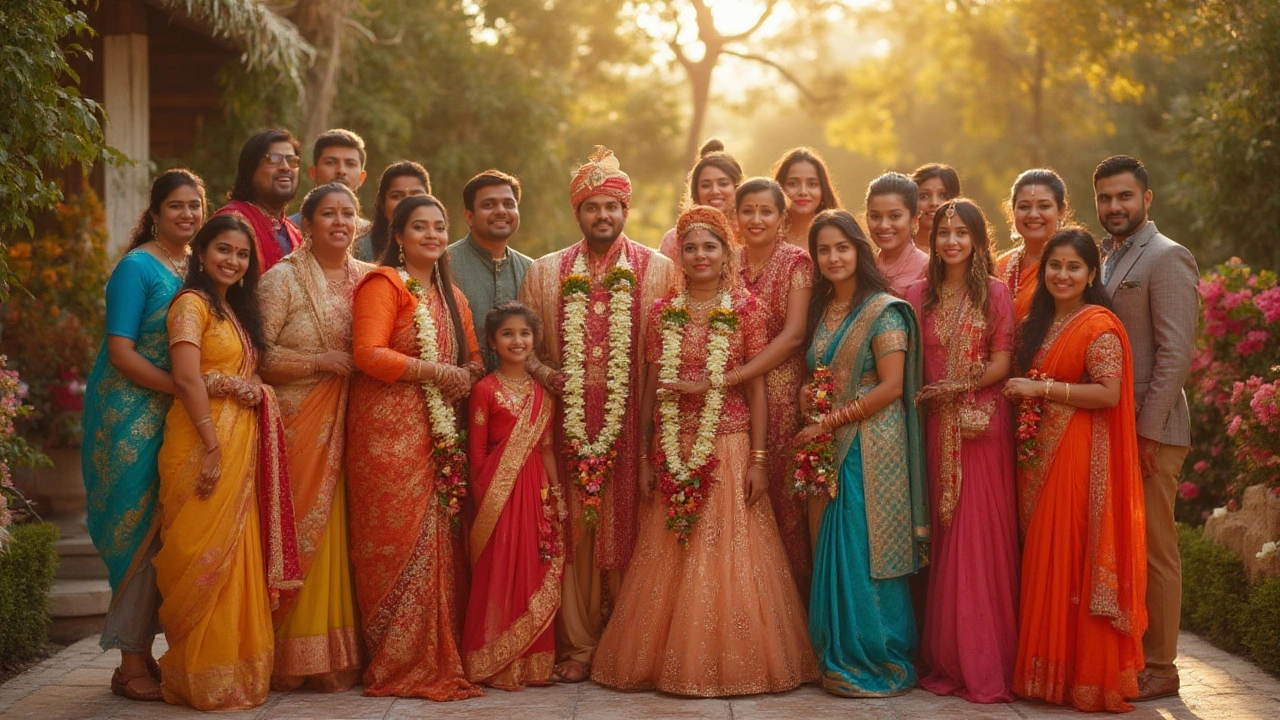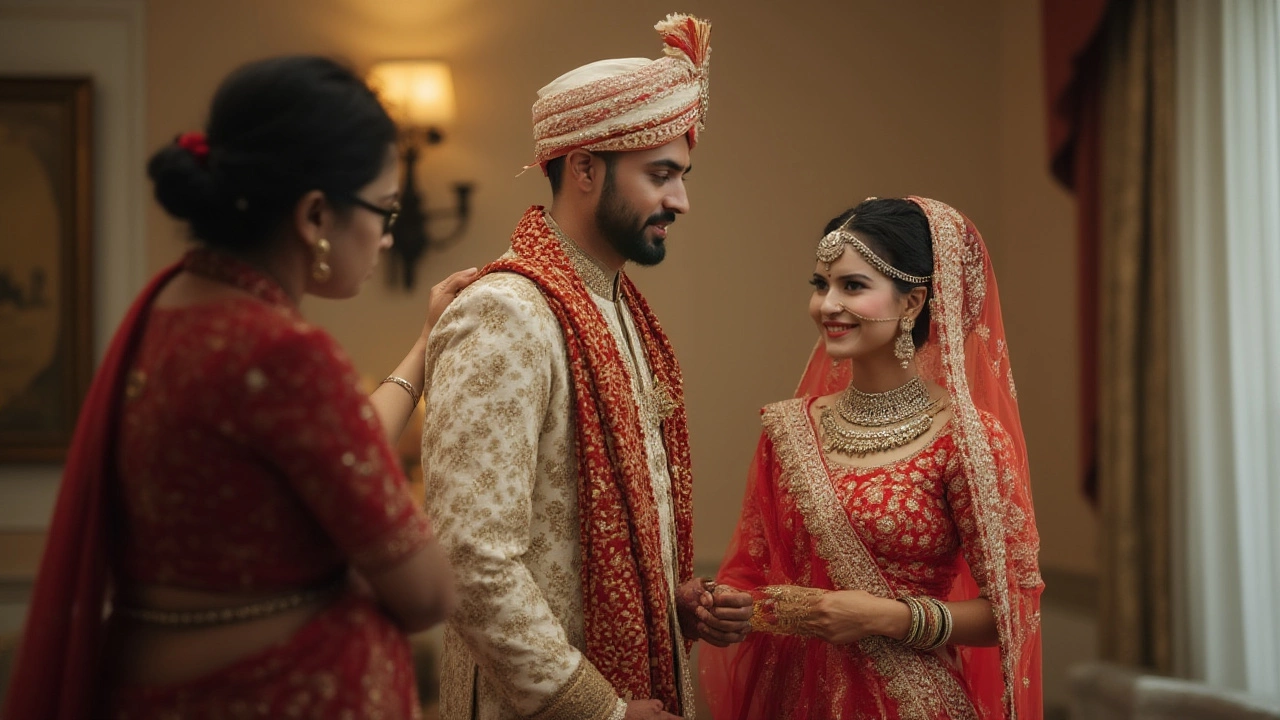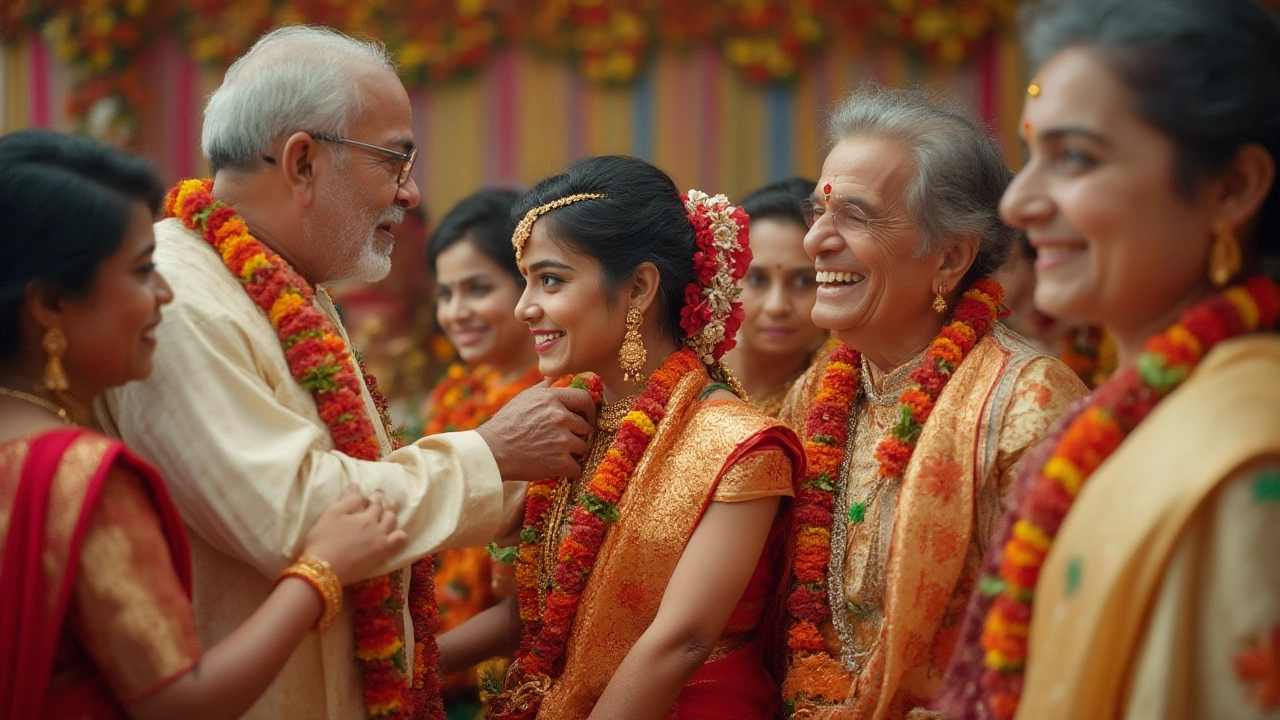How to Stand for Wedding Photos: Posing Tips and Tricks for Perfect Memories
 Jul, 26 2025
Jul, 26 2025
You might not think too much about standing for a wedding photo—until you see yourself looking like a cardboard cutout in someone else’s album. Our bodies tend to freeze or go awkward when the pressure’s on. And let’s face it, wedding photography is relentless: flashing cameras, all eyes on you, and the unspoken dread of looking stiff or like you’re hiding behind Aunt Rita. But here’s something unexpected: posing well in wedding photos isn’t about chiselled jawlines or freaky flexibility—most of it comes down to posture, comfort, and knowing exactly where to place your hands. Want to nail those shots and actually enjoy the process? Let’s break it all down without overthinking.
Understanding the Basics of Wedding Photo Posing
Standing for a wedding photo doesn’t mean standing at attention like you're back in school assembly. The biggest mistake most people make is planting themselves rigidly and thinking they need to look serious or formal. Great photographers—the kind you find shooting luxury weddings in places like central Birmingham or the Cotswolds—know that the trick is to help their subjects relax and move naturally.
Here’s a quick tip: shoulders relaxed, weight shifted slightly to one side, and never fully front-on to the camera. Yep, you read that right. Facing the lens dead-on flattens your silhouette and makes group shots look crowded. Turning your body about 30 degrees to the camera adds instant dimension. Plus, you avoid the dreaded “lamppost syndrome”—that’s photographer-speak for when you wind up looking stiff, straight, and about as lively as street furniture.
Another nugget of wisdom: mind your hands. The classic error? Letting your arms dangle straight down or crossing them like you’re fending off a chilly wind. The fix is simple—hold something, like your partner’s hand, a bouquet, or just lightly grasp your own fingers. Subtle bends in elbows and wrists look far more natural. If you’re in a bridal party, have one hand at your side and the other holding a small detail, or rest your fingertips gently on your hip or leg.
Height can also be a concern, especially if there’s a big gap between partners or among group members. In family shots, the tallest don’t always have to stand at the back. Mix it up—put taller folks at the ends, have them lean in, or even sit down if the composition feels off. This prevents that odd wedding photo where everyone seems arranged by order of height like schoolchildren.
Finally, remember the classic “chin forward, then down a bit.” Not exaggerated, just enough to defeat double chin worries and keep you confident. If all else fails, imagine you’re talking to Max, my dog—relaxed, a bit animated, and always ready to smile genuinely when the focus is on you.
Secrets Behind Natural and Relaxed Group Photos
You can always tell when a group photo isn’t working. The groom looks stressed. The bride seems about to sneeze. And Uncle Pete is looking anywhere but at the camera. How do you get everyone to look like their best selves—without turning the moment into an awkward freeze-frame?
The key is mindset. Most people feel uncomfortable because they’re suddenly aware of what to do with their bodies. Give everyone something to do: a prop, an action, or an easy talking point. Ask someone to straighten a tie, pull in closer, or even whisper a joke. A skilled photographer manages this flow—so if you’re not one yourself, delegate to the loudest extrovert (every group has one).
Balance the shot by keeping the tallest and shortest people from standing side by side. Go for symmetry, but not strict order. Staggered heights, people slightly turned, some sitting, some standing—this creates that magazine-casual vibe that the best wedding albums are made of.
Eye lines matter. If there are multiple rows, get everyone to look about six inches above the lens. That subtle angle keeps those dreaded half-closed eyes at bay—it’s also a neat trick borrowed from fashion photographers in Manchester and Liverpool. For single-row photos, aim eyes right at the camera, and don’t force a smile. Think of something genuinely funny—Max stealing shoes is my go-to. It brings out a smile that isn’t forced, which always reads better on camera.
Space is your friend: avoid crowding. If you’re in a group, leave a little breathing room between shoulders, then cheat ever so slightly closer for the photo itself. This gives the illusion of warmth and togetherness without looking crushed. And if the photographer asks for a tight shot, lean in gently rather than stepping closer—this keeps everyone’s posture natural.
Finally, switch up poses quickly. Don’t let people stand too long or start overthinking. Move from one pose to the next, laugh between shots, and don’t be afraid of a little movement—some of the best photos are captured just as everyone breaks from the pose.

Tricks for Couples Wanting Genuine Chemistry in Photos
Nothing kills wedding couple photos faster than stiff, awkward poses. If you’ve ever winced at seeing yourself standing like two strangers waiting for a bus, you know what I mean. The best couple shots look almost candid, even though there’s usually a bit of direction behind them.
The first tip: don’t be scared to get close. If you’re the bride and groom, snuggle in. Even if PDA isn’t your style, the camera loves connection—hands lightly touching, hips close, soft eye contact. Skip the full stare-down; try looking at your partner’s nose, their shoulder, or just off to the side. You’ll look natural, not posed.
Instead of standing face to face, try a staggered pose—one person turned slightly behind or to the side, arms loosely wrapped or gently touching. This adds layers and shape. It’s also a great fix if there’s a big height difference or if someone feels self-conscious.
Let’s talk movement. Walking shots—hand in hand, with genuine stride—always read as relaxed. If you feel robotic, chat as you walk. Whisper something silly. Momentum makes everything look easy, and laughter photographs beautifully. Leaning in forehead-to-forehead is another classic. Don’t press too hard; just close enough that it feels intimate but not forced.
Little gestures mean a lot. Tucking hair, tidying a tie, brushing a bit of dust from a shoulder—these candid movements add life, removing the ‘we are now posing’ vibe. And don’t forget to breathe! Sounds obvious, but holding your breath reads as tense every time.
You can always spot a pro photographer because they’ll keep you moving, chatting, shifting the angles. If you’re caught on the spot without help, just move gently every few seconds—change your gaze, adjust your grip, or sway slightly. Even on camera, the smallest bit of life becomes magnetic. And if you’re really feeling awkward, focus on each other, not the crowd or the lens. That inward attention always shows, and your *wedding photo poses* will stand out for all the right reasons.
How to Pose Large Groups Without Losing Your Mind
Big family shots: they strike fear into the heart of even seasoned photographers. There’s always someone missing, someone blinking, and someone rolling their eyes because it’s ‘taking too long.’ But with a few tricks up your sleeve, you can wrangle a crowd and still look sharp in every picture.
Start with a plan. Before the wedding, work out which family and friend combinations you need. Write a list, even if it’s just on your phone. An efficient photographer or wedding planner will call out names, but being organized from your side helps avoid chaos and double-ups. If you’re part of the couple, share your shot list ahead of time—right down to details like “mum wants one just with the cousins.”
The arrangement matters more than you think. Keep the couple at the centre—anchor the photo, and everyone else radiates out. Put children at the front, not hidden behind taller adults. Older relatives or anyone with mobility issues should get a seat at the front, making them visible and comfortable.
Slight staggering helps: instead of straight lines, try ‘V’ or curved shapes. Put the shortest in front, taller ones at the edges, and resist every urge to cluster by family ties. The aim is togetherness, not cliques—or, worse, two walls of people staring each other down. Even the biggest groups look friendlier when everyone leans slightly in towards the middle, focusing attention without a lot of wasted space.
Next comes the actual ‘standing.’ Get everyone to relax their shoulders, and don’t let hands drop flat by sides. Suggest little pockets—hands in jacket, thumbs hooked together, or arms gently linking. Avoid crossed arms, which look defensive, and awkward ‘arms-on-shoulders’ unless natural (or the group asks for it).
Quick-fire bursts help here—take multiple shots in rapid succession. Someone will always blink, but odds are in your favour if you get three or four tries in. And right before the click, tell folks to look just above the camera lens for a millisecond. It keeps eye lines steady without looking unnatural.
Lastly, when kids are in the group, have someone stand right behind the photographer and make them laugh. Sounds silly, but genuine smiles beat forced ones every time. My Max—yes, my dog—has been honorary Best Dog at three weddings because a wagging tail gets little ones to grin like nothing else.

Posture, Body Language, and Other Photo-Ready Moves
So much of standing well for a wedding photo is about the little stuff—behind-the-scenes micro-movements that most people won’t even notice unless they look at the final prints.
Start with posture. Chest up, not out; Imagine a thread gently drawing the top of your head skyward. Your spine should feel long, not rigid. A tiny lean forward, just a hair, feels dynamic and cuts out the dreaded ‘slouch’ look. If you’re standing next to someone, angle your upper body in their direction. Couples often mirror each other naturally—lean in (but not squish in) for visual balance.
Watch for tension in your jaw, hands, and shoulders before every photo. Wiggle your fingers, roll your neck, and take one deep breath. Any tension will show up as ‘that nervous look’ in photos.
There’s a rule among wedding photographers: keep joints soft. Never lock knees, elbows, or fingers. A gentle bend everywhere creates softer lines and gives a more approachable energy. Hands should be occupied—rest them on your hip, gently cross one wrist over the other, or use props.
Facial expressions matter just as much. You want a genuine smile, but that’s rare under pressure. The trick? Briefly close your eyes, take a breath, and open up as the shutter clicks. It resets your face and stops that blank, ‘waiting for a bus’ look.
The final polish: adjust clothes before every major photo. Smooth out dresses, turn collars straight, and check for stray hairs or bits of fluff (especially if you have a pet in the house like Max, who sheds enough fur to make his own outfit). Check shoes are straight, avoid stepping on trains or veils, and give yourself a moment to compose before the photo is snapped.
Most of all, enjoy the moment. Years down the line, you’ll care more about memories than perfect symmetry. Relax, be yourself, and trust that a little know-how goes a long way. Who knew something as simple as how to stand for wedding photos could be the difference between memories you love—or ones you hope never make it to Facebook?